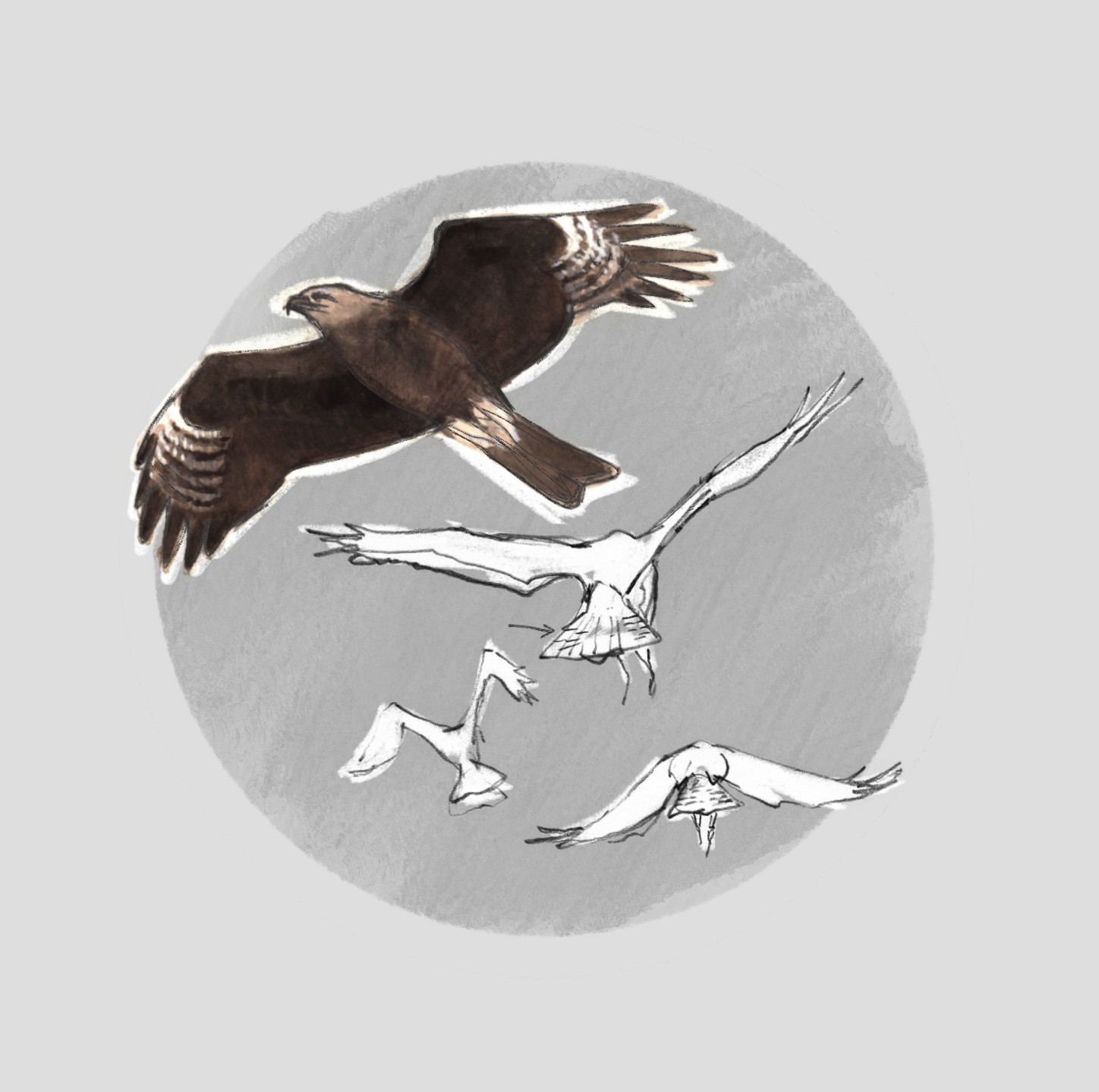HONEY BUZZARD (Pernis apivorous) -Bondrée apivore
Summary
Thinly scattered throughout Switzerland, more common as a passage migrant. Easily overlooked but listen out for their di-syllabic call “ke-leer”:
Honey Buzzard studies © Frank Jarvis
Honey Buzzards are thinly scattered throughout Switzerland, found mainly in wooded areas and valleys of the Grisons, Valais and Jura. In the Jura they are recorded up to 1,000m and in the Alps to about 1,400m. They both breed here and pass through on spring and autumn migrations. They are easily dismissed as one of the more numerous Common Buzzards but have longer wings, a long neck with a smallish pigeon-like head, and a long tail with three dark bands.
The call can be distinguished from that of a Common Buzzard although it is of the same frequency (about 2.5 Khz) it has a piercing ring to it and is of a rather mournful quality which can be di-syllabic (two phrases - ke-leeer) or tri-syllabic (ke-le-eeer):
There were two birds in that last recording made in Normandy in August 2009. The tri-syllabic call is the most easy to distinguish and has a sort of a "switch" in the middle of it, this can be seen in the spectrogram as a step up and down again:
© Arlette Berlie
Here is another example, again with two birds calling recorded at Biere in August 2008, you can hear one bird making the tri-syllabic call (at 1s and 7s) being answered by one giving the smoother di-syllabic call:
......and the two types of call can easily be seen on the spectrogram:
Honey Buzzard mobbed by Crows © Frank Jarvis
Cramp et al says that the Honey Buzzard is less vocal than other species except during the later stages of the nestling period - and it is interesting that my only recordings were all made in the month of August.






